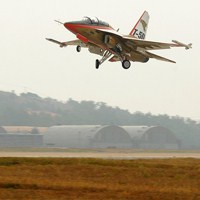On Jan. 30, the Philippine government announced plans to buy 12 South Korean fighter jets -- its first new fighter jet purchase since retiring the last of its U.S.-designed F-5 fleet in 2005. Chung-in Moon, a political science professor at South Korea’s Yonsei University, described the state of the Korean aerospace industry and what the purchase means in an email interview.
WPR: What is the current state of South Korea's aerospace sector?
Chung-in Moon: The South Korean aerospace industry underwent a major restructuring in 1999 following the Asian financial crisis. Daewoo Heavy Machinery, Samsung Aviation (now Samsung Techwin) and Hyundai Aerospace merged into Korea Aerospace Industries (KAI) with the government of the Republic of Korea as majority shareholder. KAI is now the mainstay of the aerospace industry in South Korea. It manufactures KT-1 basic training planes, Korean-type helicopters and KT-50 advanced training planes. In addition, KAI produces fuselages, wings and landing gear for Apache attack helicopters and civilian planes. Military sales account for about 60 percent of its annual sales, and commercial sales for about 40 percent. After successfully launching the Naro satellite last month, KAI is most likely to move into the rocket and satellite field. Since KAI has a monopoly in Korea’s aerospace industry, there is no room for other firms, including foreign ones, to enter. And debates are ongoing whether KAI should be privatized or not.
WPR: How competitive is the sector globally, and which countries are its primary commercial partners?

